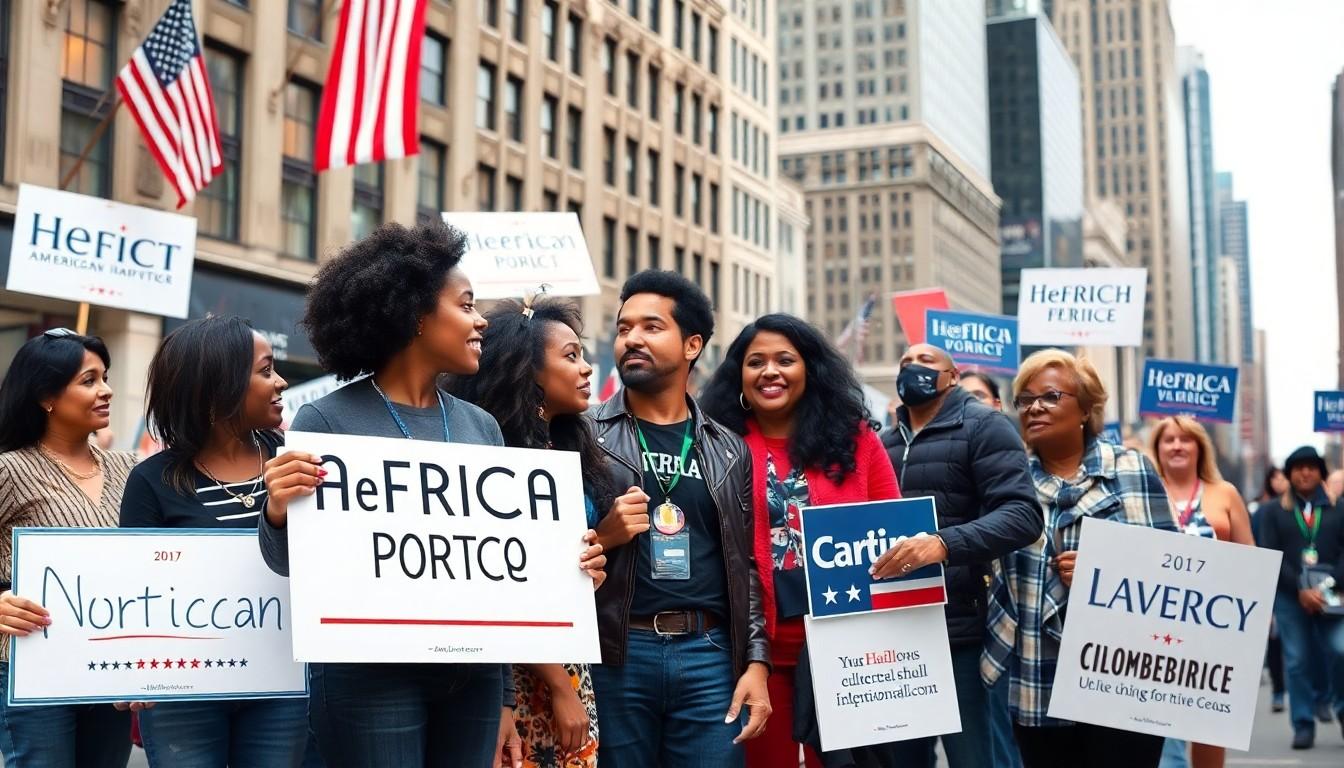Phone:
(701)814-6992
Physical address:
6296 Donnelly Plaza
Ratkeville, Bahamas.

Political parties play a starring role in the grand theater of public policy, often pulling the strings behind the scenes. They’re like the directors of a blockbuster film, orchestrating the plot twists and character arcs that shape society. One way they do this is through their ability to rally support and mobilize voters, turning ideas into action.
Political parties serve as foundational structures in democratic systems. They unite individuals with shared beliefs and values, creating platforms that articulate their visions for society. These organizations receive varying levels of public support, influencing the legislative agenda and overall direction of government.
Members of political parties collaborate to elect representatives who align with their ideology. This collaboration translates into policies that reflect the party’s goals. Additionally, parties prioritize issues that resonate with their constituencies, ensuring their platforms remain relevant and dynamically engage the electorate.
These entities also shape public opinion through campaigns and advocacy. By promoting particular narratives, parties can sway perspectives and galvanize voter turnout during elections. Major events, such as debates and rallies, allow parties to highlight their proposals and criticize opponents.
In legislative settings, parties hold significant power. Majority parties dictate the flow of legislation, controlling which bills receive attention and which in the legislative process stall. Minority parties employ strategies to influence decisions, providing checks on majority power.
Fundraising plays a crucial role in sustaining political parties. Financial contributions enable them to support candidates, fund initiatives, and launch voter outreach efforts. Strong fundraising capabilities often correlate with electoral success and broader policy influence.
Ultimately, political parties shape public policy through a multifaceted approach. They craft the political landscape, determine the viability of policies, and mobilize citizens to engage with their democracy. Through these actions, the impact of political parties on public policy becomes evident.

Political parties play a crucial role in shaping public policy through several mechanisms. They craft platforms that reflect their ideological beliefs and priorities.
Party platforms serve as blueprints for policies. They outline the values and objectives that a political party promotes. Through the development of these platforms, parties present voters with a clear agenda. Most platforms address key issues such as healthcare, education, and the economy. Each platform aims to resonate with constituents, providing a basis for legislative action. Fostering unity among party members leads to coherent strategies that drive policy initiatives.
Voter mobilization significantly influences policy outcomes. Political parties engage in campaigns designed to increase turnout and advocate for their platforms. Door-to-door canvassing, phone banking, and social media outreach create connections with potential voters. Each effort focuses on enhancing voter awareness and participation. Successful mobilization translates into electoral victories, allowing parties to implement their policy goals. Fundraising efforts also enhance these initiatives, providing resources for outreach activities. Overall, mobilizing voter support strengthens the party’s influence on public policy.
Political parties significantly shape public policy through historical and contemporary examples. The interplay between party ideology and policy development illustrates their role in governance.
In the 1930s, the Democratic Party positioned itself as a champion of the New Deal, advocating for significant reforms to alleviate the Great Depression. This initiative included Social Security and labor rights, addressing economic challenges directly. The Republican Party, in contrast, opposed extensive government intervention, promoting limited government and free-market principles. Such contrasting platforms influenced public policy during a critical time in American history. The aftermath showcased how political alignment could affect legislation, transforming the economic landscape.
In recent years, the Republican Party’s focus on tax cuts and deregulation impacted fiscal policies significantly. The Tax Cuts and Jobs Act of 2017 serves as a pivotal example, reflecting the party’s priorities. Meanwhile, the Democratic Party has pushed for expansive healthcare reforms, illustrated by efforts to strengthen the Affordable Care Act. These initiatives demonstrate how current political agendas shape policy discussions and legislative outcomes. Public opinion plays a crucial role in these dynamics, driving parties to adapt and respond to voter preferences in real time.
Political parties encounter various challenges that influence their effectiveness in shaping public policy. Voter polarization complicates the political landscape, as divergent views often lead to gridlock in legislative processes. Fractured voter bases can hinder a party’s ability to present a unified front, reducing their persuasive power.
Funding issues also pose significant hurdles. Many parties rely on donations to support campaigns and initiatives. As small donor contributions fluctuate, larger donors may exert disproportionate influence over policy priorities. Consequently, parties must navigate the delicate balance between competing interests and constituent needs.
Changing public opinion requires constant adaptation. Parties striving to align with constituent preferences must monitor evolving social and economic trends. Failure to adapt may result in losing voter support, directly impacting election outcomes.
Furthermore, internal divisions challenge party cohesion. Factions within a party may advocate for differing policies, creating conflicts that weaken overall strategy. Effective communication and conflict resolution become essential in maintaining unity to drive coherent policy agendas.
Competition from third parties further complicates the situation. Growing dissatisfaction with major parties often leads voters to seek alternatives. This shift can dilute traditional party bases, making it harder for political factions to maintain influence and execute their policies.
Finally, heightened scrutiny from the media plays a critical role in shaping public perceptions. With increased transparency, parties face greater accountability for their actions. Adverse media coverage can diminish public trust, negatively affecting voter engagement and participation.
Political parties play a pivotal role in shaping public policy by acting as the driving force behind legislative agendas and voter mobilization. Their ability to unite individuals around shared beliefs allows them to influence public opinion and advocate for specific policy initiatives. As they navigate challenges such as voter polarization and funding issues, political parties must remain adaptable to maintain relevance and support. The impact of their strategies can be seen in historical and contemporary examples, illustrating how party ideologies directly affect policy outcomes. Ultimately, the dynamic relationship between political parties and the public underscores the importance of active engagement in the democratic process.